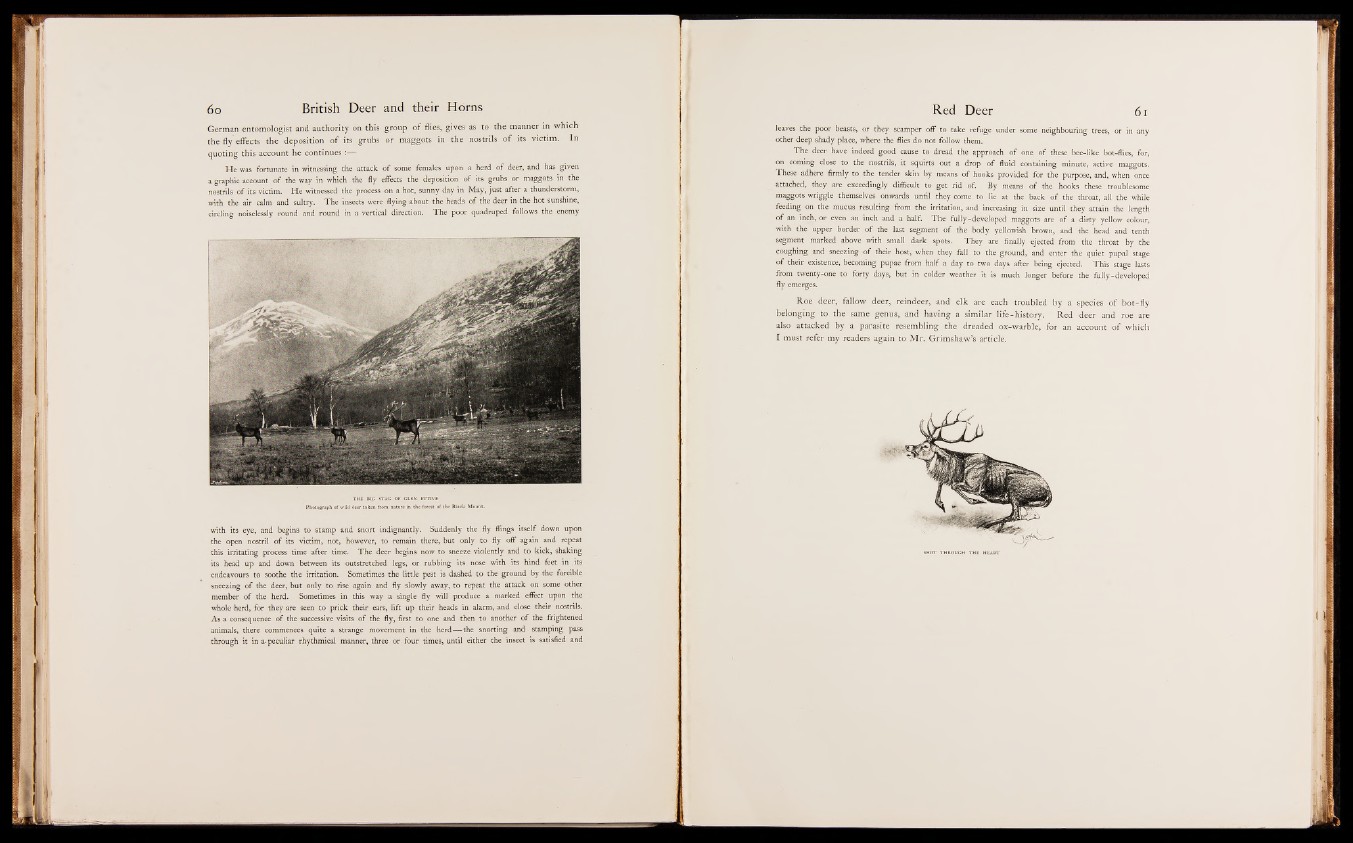
German entomologist and authority on tilts group of flies, gives as to the manner in which
the fly effects the deposition o f its grubs or maggots in t'pf nostrils o f its victim. In
quoting this account he continues :—
He was fortunate in witnessing the attack o f some females upon a herd o f deer, and has given
a graphic account o f the way in which the fly effects the deposition o f its grubs or maggots in the
nostrils o f its victim. He witnessed the process on a hot, sunny day in May, just after a thunderstorm,
with the air calm and sultry. The insects were flying about the heads o f the deer in the hot sunshine,
circling noiselessly round and round in a vertical direction. The poor quadruped follows the enemy
with its eye, and begins to stamp and snort indignantly. Suddenly the fly flings itself down upon
the open nostril o f its victim, not, however, to remain there, but only to fly off again and repeat
this irritating process time after time. The deer begins now to sneeze violently and to kick, shaking
its head up and down between its outstretched legs, or rubbing its nose with its hind feet in .its
endeavours to soothe the irritation. Sometimes the little pest is dashed to the ground by the forcible
sneezing o f the deer, but only to rise again and fly slowly away, to repeat the attack on some other
member o f the herd. Sometimes in this way a single fly will produce a marked effect upon the
whole herd, for they are seen to prick their ears, lift up their heads in alarm, and close their nostrils.
As a consequence o f the successive visits o f the fly, first to one and then to another o f the frightened
animals, there commences quite a strange movement in the herd— the snorting and stamping pass
through it in a-peculiar rhythmical manner, three or four times, until either the insect is satisfied and
leaves the poor beasts, or they scamper off to take refuge under some neighbouring trees, or in any
other deep shady place, where the flies do not follow them.
The deer have indeed good cause to dread the approach o f one o f these bee-like bot-flies, for,
on coming close to the nostrils, it squirts out a drop o f fluid containing minute, active maggots.
These adhere firmly to the tender skin by means o f hooks provided for the purpose, and, when once
attached, they are exceedingly difficult to get rid of. By means o f the hooks these troublesome
maggots wriggle themselves onwards until they come to lie at the back o f the throat, all the while
feeding on the mucus resulting from the irritation, and increasing in size until they attain the length
o f an inch, or even an inch and a half. The fully-developed maggots are o f a dirty yellow colour,
with the upper border o f the last segment o f the body yellowish brown, and the head and tenth
segment marked above with small dark spots. They are finally ejected from the throat by the
coughing and sneezing o f their host, when they fall to the ground, and enter the quiet pupal stage
o f their existence, becoming pupae from half a day to two days after being ejected. This stage lasts
from twenty-one to forty days, but in colder weather it is much longer before the fully-developed
fly emerges.
Roe deer, fallow deer, reindeer, and elk are each troubled by a species o f bot-fly
belonging to the same genus, and having a similar life-history. Red deer and roe are
also attacked by a parasite resembling the dreaded ox-warble, for an account o f which
I must refer my readers again to Mr. Grimshaw’s article.